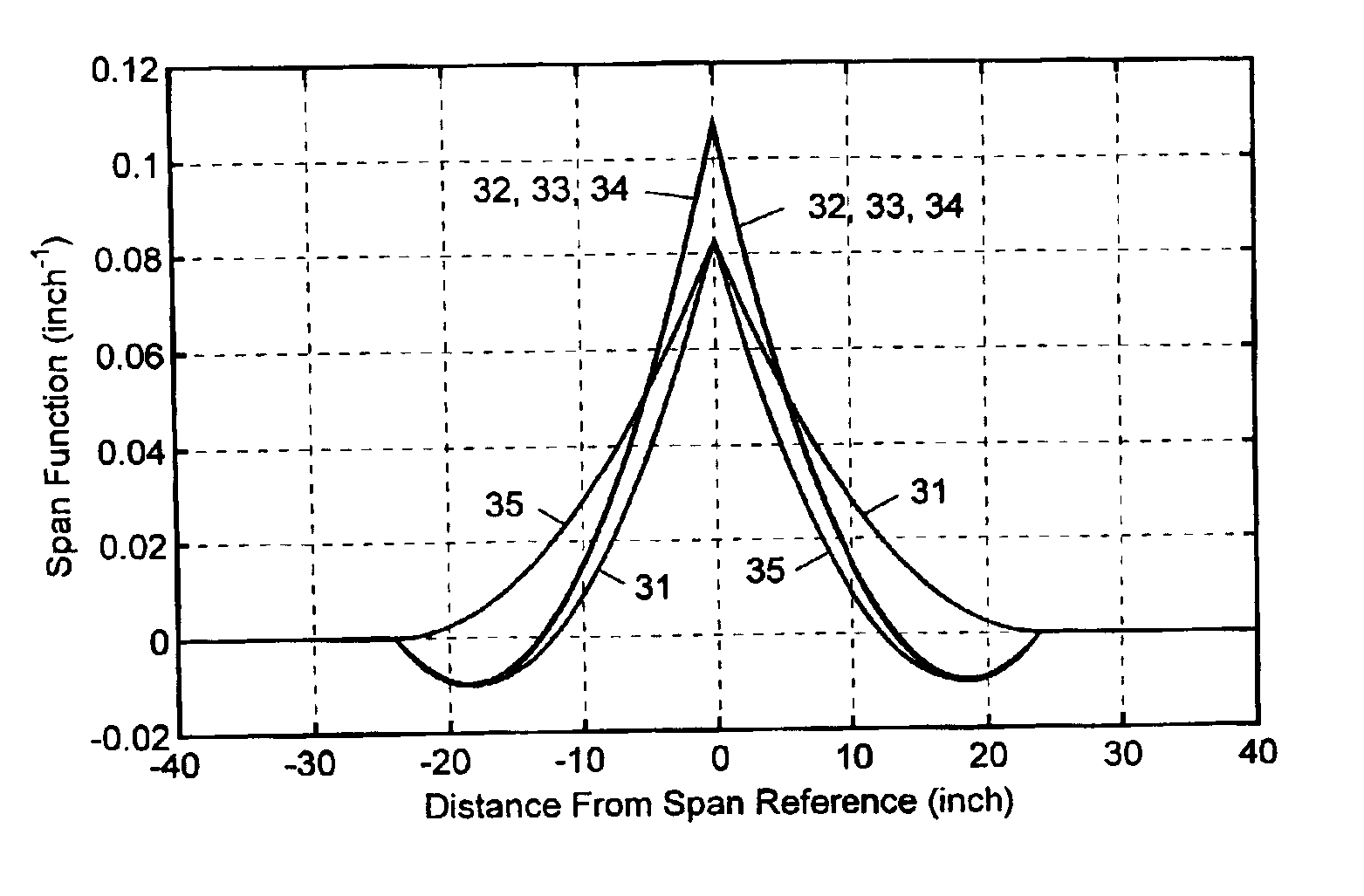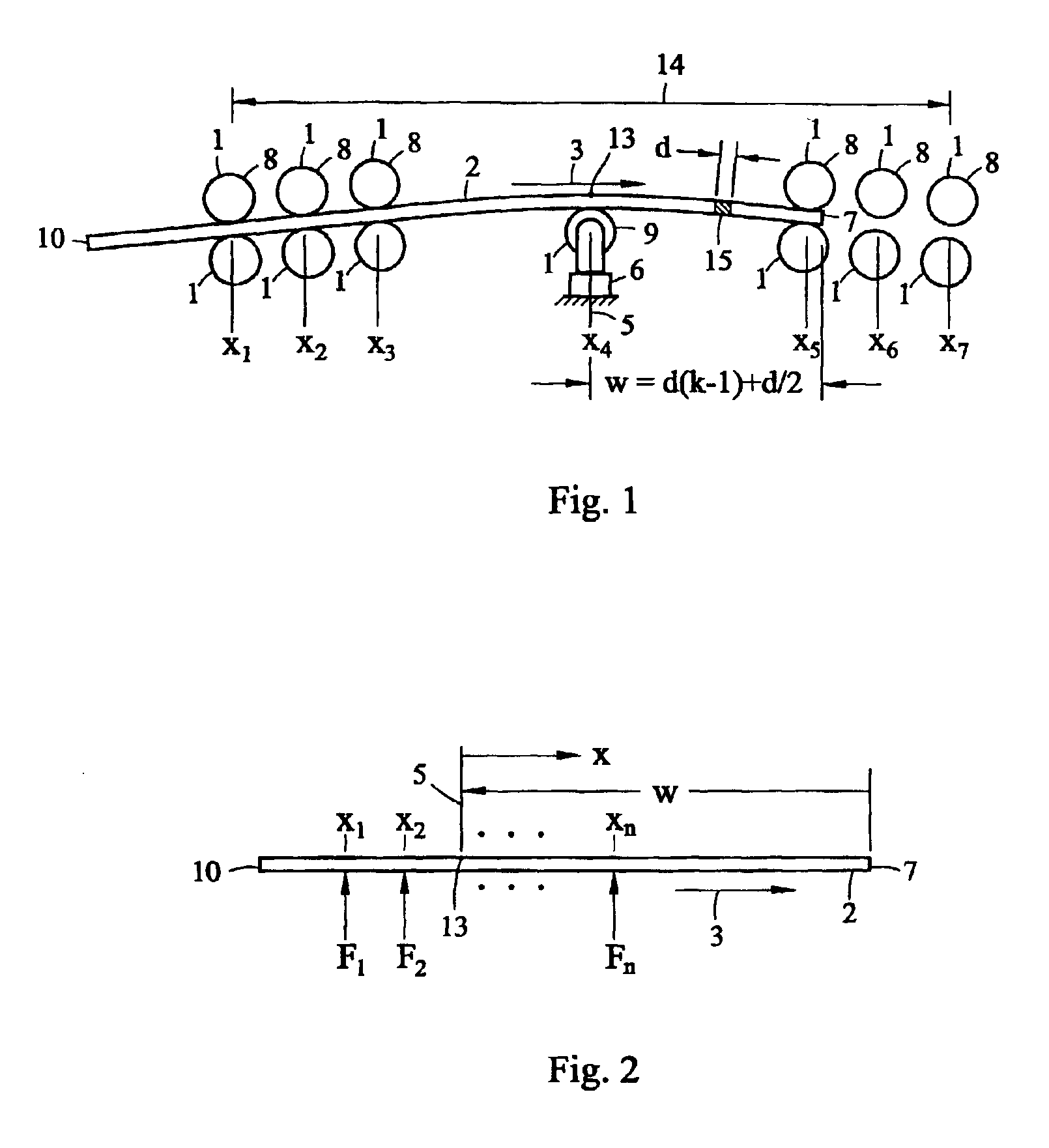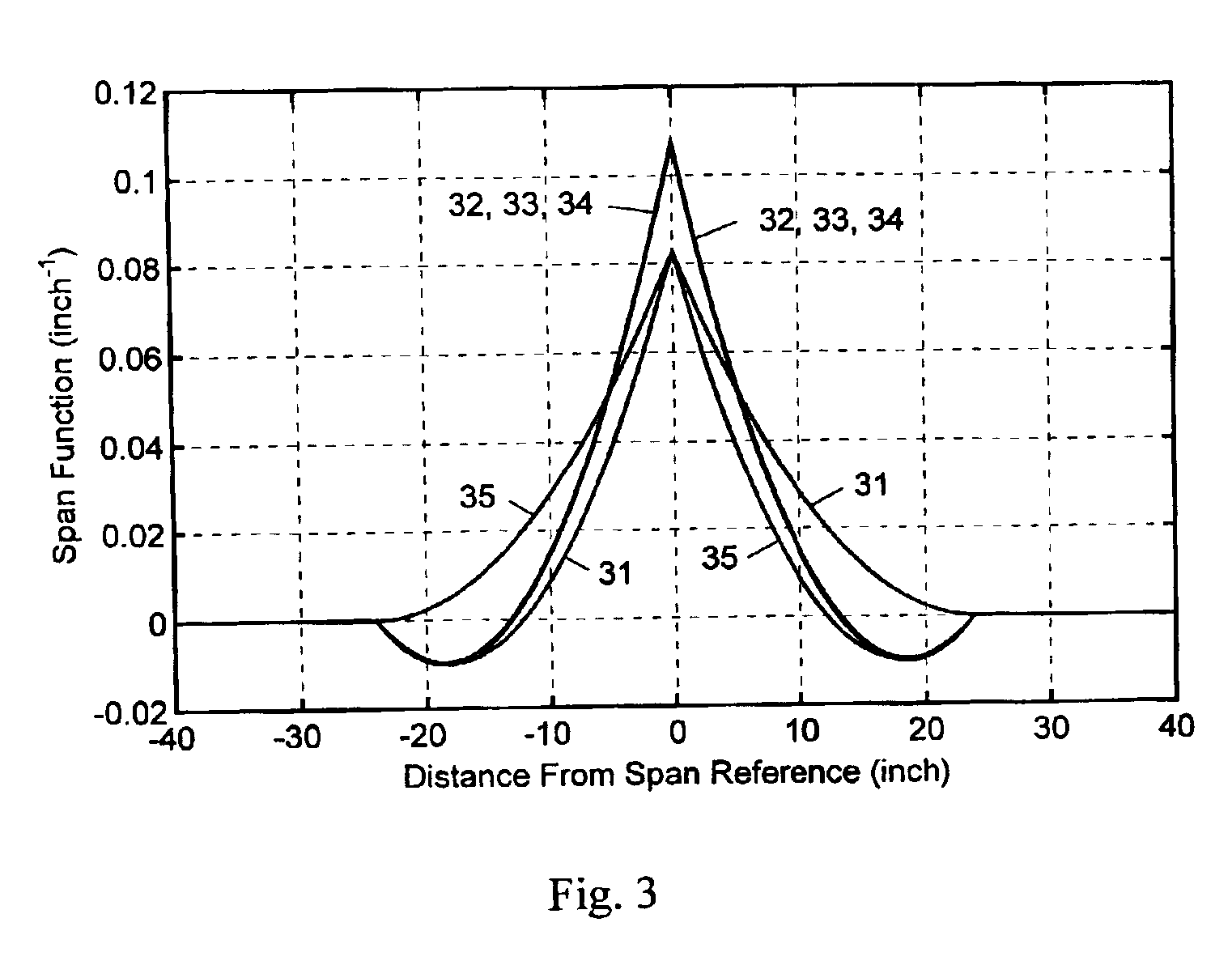Method for estimating compliance at points along a beam from bending measurements
a bending measurement and compliance technology, applied in the field of new methods, can solve the problems of no optimal method for estimating local, no theoretical support for this use of span functions, and no known approach to account for this non-stationarity of bending spans in the prior art, and achieve the effect of reducing the quality of estimation
- Summary
- Abstract
- Description
- Claims
- Application Information
AI Technical Summary
Benefits of technology
Problems solved by technology
Method used
Image
Examples
second alternative embodiment
at Third Points)
[0293]As another practical example, and to demonstrate another detail, consider a four-support bending span where loads are applied at the “third points” as shown schematically in FIG. 14. This configuration is often used for off-line quality control testing of lumber. A feature of this apparatus is its load-spreading beam 50, which, through fulcrum 51, causes the loads applied by beam 50 to beam 2 to be equal at two support points. As with the first alternative embodiment, deflections and forces are referenced from preload values. The bending span reference 5 is midway in the bending span. In this example, there is no support located at the reference position 5. In FIG. 2, illustrating the general situation, the number of supports is n=4 for this example, and the support locations relative to the reference 5 are x1=−L / 2, x2=−L / 6, x3=L / 6, and x4=L / 2. L is the length of the span so that L=x4−x1. This set of support conditions is indicated by 52 in FIG. 14.
[0294]Two ve...
PUM
 Login to View More
Login to View More Abstract
Description
Claims
Application Information
 Login to View More
Login to View More - R&D
- Intellectual Property
- Life Sciences
- Materials
- Tech Scout
- Unparalleled Data Quality
- Higher Quality Content
- 60% Fewer Hallucinations
Browse by: Latest US Patents, China's latest patents, Technical Efficacy Thesaurus, Application Domain, Technology Topic, Popular Technical Reports.
© 2025 PatSnap. All rights reserved.Legal|Privacy policy|Modern Slavery Act Transparency Statement|Sitemap|About US| Contact US: help@patsnap.com



